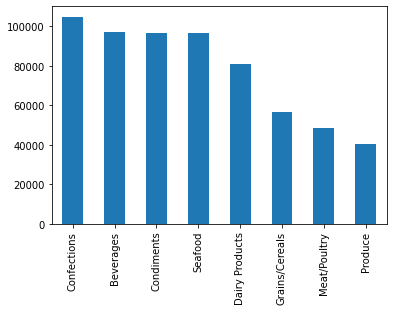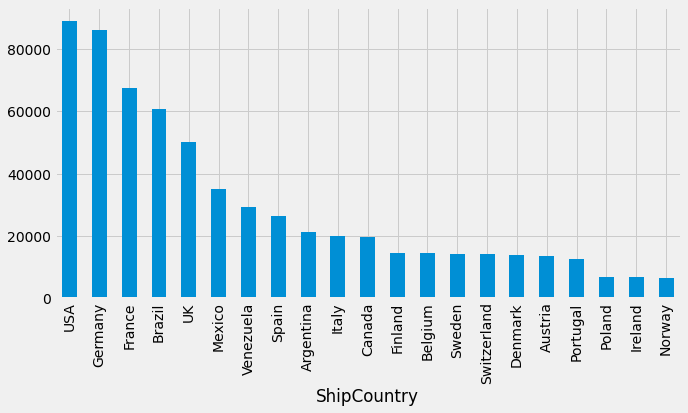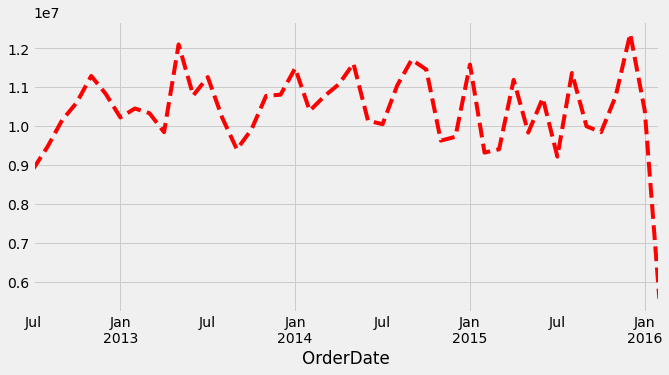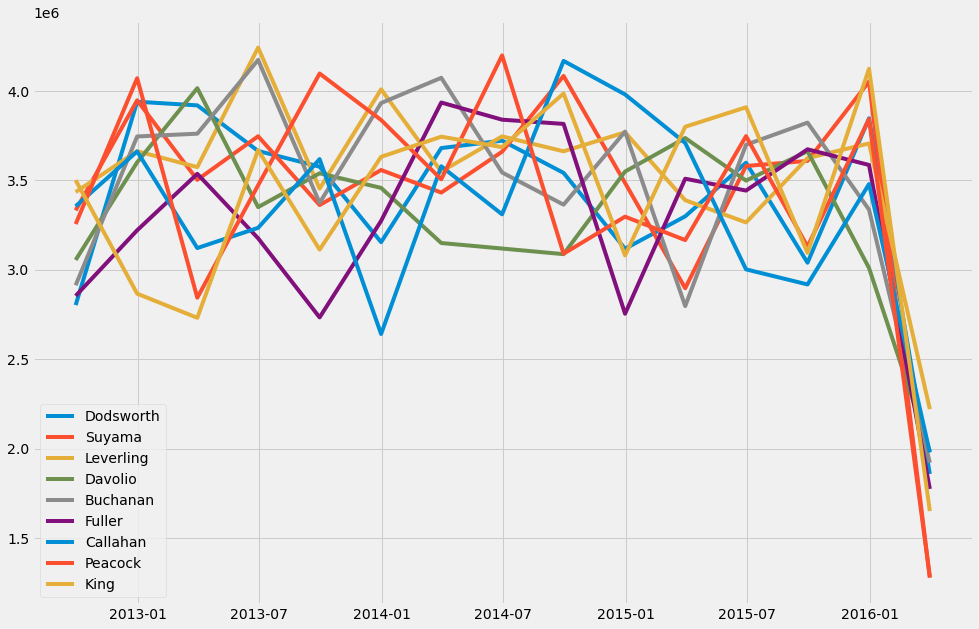5. Connecting with accounting databases#
5.1. Power BI#
The easiest way to exploit the Python ecosystem in Power BI is to enable Python scripting inside Power BI. For that, you need to have Python installed in your system.
In Power BI, check from Options - Global - Python scripting that you have correct folders for your Python and IDE. Power BI should detect the folders automatically, but it is good to check.
Furthermore, you need to have at least Pandas, Matplotlib and Numpy installed.
You can run Python scripts inside Power BI using Get Data - Other - Python script. However, it is a good habit to check in your Python environment that the script is working.
There are a few limitations with the connection between Power BI/Python:
If you want to import data, it should be represented in a Pandas data frame.
The maximum run time of a script is 30 minutes.
You must use full directory paths in your code, not relative paths.
Nested tables are not supported.
Otherwise, implementing Python in Power BI is very similar to doing analysis purely inside Python. The good thing is, of course, that you have the tools of both Python and Power BI at your disposal.
5.2. MySQL, SAP and others#
There are good libraries for connecting to MySQL, for example, MySQLdb: pypi.org/project/MySQL-python/. If you want, you can use your MySQL database to go through the examples, instead of SQlite.
SAP HANA is used to connect with Python to a SAP database. Here are the instructions on how to connect Python to SAP: developers.sap.com/tutorials/hana-clients-python.html. The task is quite difficult, and we are not doing that in this course.
5.3. Sqlite#
In the following, we will analyse our example database purely in Python. For that, we use an example company database that is available here: github.com/jpwhite3/northwind-SQLite3

This demo-database has originally been published to Microsoft Access 2000. We analyse it using Sqlite3. However, keep in mind that you can repeat the following analysis by connecting to many other databases, like SAP. In the following, we use some basic SQL statements. However, this course is not about SQL, so we do not go deeper in that direction.
Sqlite3 is included in the standard library. So, you do not need to install any additional libraries. Let’s start by importing the library.
import sqlite3
We can create a connection to the example database with connect(). You need to have the Northwind_large.sqlite file in your work folder for the following command to work.
connection = sqlite3.connect('Northwind_large.sqlite')
cursor() returns a cursor for the connection. A cursor -object has many useful methods to execute SQL statements.
cursor = connection.cursor()
The tables of the database can be collected with the following commands. execute() is used for a SQL statement and fetchall() collects all the rows from the result.
cursor.execute("SELECT name FROM sqlite_master WHERE type='table'")
print(cursor.fetchall())
[('Employees',), ('Categories',), ('Customers',), ('Shippers',), ('Suppliers',), ('Orders',), ('Products',), ('OrderDetails',), ('CustomerCustomerDemo',), ('CustomerDemographics',), ('Region',), ('Territories',), ('EmployeeTerritories',)]
We check the fields of the Employees, OrderDetails, Orders and Products tables. The outpus are messy lists of tuples. The name of a field is always the second item in a tuple.
cursor.execute("PRAGMA table_info(Employees)")
print(cursor.fetchall())
[(0, 'Id', 'INTEGER', 0, None, 1), (1, 'LastName', 'VARCHAR(8000)', 0, None, 0), (2, 'FirstName', 'VARCHAR(8000)', 0, None, 0), (3, 'Title', 'VARCHAR(8000)', 0, None, 0), (4, 'TitleOfCourtesy', 'VARCHAR(8000)', 0, None, 0), (5, 'BirthDate', 'VARCHAR(8000)', 0, None, 0), (6, 'HireDate', 'VARCHAR(8000)', 0, None, 0), (7, 'Address', 'VARCHAR(8000)', 0, None, 0), (8, 'City', 'VARCHAR(8000)', 0, None, 0), (9, 'Region', 'VARCHAR(8000)', 0, None, 0), (10, 'PostalCode', 'VARCHAR(8000)', 0, None, 0), (11, 'Country', 'VARCHAR(8000)', 0, None, 0), (12, 'HomePhone', 'VARCHAR(8000)', 0, None, 0), (13, 'Extension', 'VARCHAR(8000)', 0, None, 0), (14, 'Photo', 'BLOB', 0, None, 0), (15, 'Notes', 'VARCHAR(8000)', 0, None, 0), (16, 'ReportsTo', 'INTEGER', 0, None, 0), (17, 'PhotoPath', 'VARCHAR(8000)', 0, None, 0)]
cursor.execute("PRAGMA table_info(OrderDetails)")
print(cursor.fetchall())
[(0, 'Id', 'VARCHAR(8000)', 0, None, 1), (1, 'OrderId', 'INTEGER', 1, None, 0), (2, 'ProductId', 'INTEGER', 1, None, 0), (3, 'UnitPrice', 'DECIMAL', 1, None, 0), (4, 'Quantity', 'INTEGER', 1, None, 0), (5, 'Discount', 'DOUBLE', 1, None, 0)]
cursor.execute("PRAGMA table_info(Orders)")
print(cursor.fetchall())
[(0, 'Id', 'INTEGER', 0, None, 1), (1, 'CustomerId', 'VARCHAR(8000)', 0, None, 0), (2, 'EmployeeId', 'INTEGER', 1, None, 0), (3, 'OrderDate', 'VARCHAR(8000)', 0, None, 0), (4, 'RequiredDate', 'VARCHAR(8000)', 0, None, 0), (5, 'ShippedDate', 'VARCHAR(8000)', 0, None, 0), (6, 'ShipVia', 'INTEGER', 0, None, 0), (7, 'Freight', 'DECIMAL', 1, None, 0), (8, 'ShipName', 'VARCHAR(8000)', 0, None, 0), (9, 'ShipAddress', 'VARCHAR(8000)', 0, None, 0), (10, 'ShipCity', 'VARCHAR(8000)', 0, None, 0), (11, 'ShipRegion', 'VARCHAR(8000)', 0, None, 0), (12, 'ShipPostalCode', 'VARCHAR(8000)', 0, None, 0), (13, 'ShipCountry', 'VARCHAR(8000)', 0, None, 0)]
cursor.execute("PRAGMA table_info(Products)")
print(cursor.fetchall())
[(0, 'Id', 'INTEGER', 0, None, 1), (1, 'ProductName', 'VARCHAR(8000)', 0, None, 0), (2, 'SupplierId', 'INTEGER', 1, None, 0), (3, 'CategoryId', 'INTEGER', 1, None, 0), (4, 'QuantityPerUnit', 'VARCHAR(8000)', 0, None, 0), (5, 'UnitPrice', 'DECIMAL', 1, None, 0), (6, 'UnitsInStock', 'INTEGER', 1, None, 0), (7, 'UnitsOnOrder', 'INTEGER', 1, None, 0), (8, 'ReorderLevel', 'INTEGER', 1, None, 0), (9, 'Discontinued', 'INTEGER', 1, None, 0)]
Pandas has a very convenient function, read_sql_query, to load SQL queries to dataframes. Let’s start by loading Pandas.
import pandas as pd
SQL queries are a whole new world, and we use only the essential. The following code picks up LastName from the Employees table, UnitPrice and Quantity from the OrderDetails, OrderDate and ShipCountry from Orders, CategoryName from Categories, and ProductName from Products. The next part of the code is important. The JOIN commands connect the data in different tables in a correct way. Notice how we qive our sqlite3 database connection -object as a paramter to the function.
query_df = pd.read_sql_query("""SELECT Employees.LastName, OrderDetails.UnitPrice,
OrderDetails.Quantity, Orders.OrderDate, Orders.ShipCountry, Categories.CategoryName, Products.ProductName
FROM OrderDetails
JOIN Orders ON Orders.Id=OrderDetails.OrderID
JOIN Employees ON Employees.Id=Orders.EmployeeId
JOIN Products ON Products.ID=OrderDetails.ProductId
JOIN Categories ON Categories.ID=Products.CategoryID""", connection)
query_df
| LastName | UnitPrice | Quantity | OrderDate | ShipCountry | CategoryName | ProductName | |
|---|---|---|---|---|---|---|---|
| 0 | Buchanan | 14.00 | 12 | 2012-07-04 | France | Dairy Products | Queso Cabrales |
| 1 | Buchanan | 9.80 | 10 | 2012-07-04 | France | Grains/Cereals | Singaporean Hokkien Fried Mee |
| 2 | Buchanan | 34.80 | 5 | 2012-07-04 | France | Dairy Products | Mozzarella di Giovanni |
| 3 | Suyama | 18.60 | 9 | 2012-07-05 | Germany | Produce | Tofu |
| 4 | Suyama | 42.40 | 40 | 2012-07-05 | Germany | Produce | Manjimup Dried Apples |
| ... | ... | ... | ... | ... | ... | ... | ... |
| 621878 | Davolio | 21.00 | 20 | 2013-08-31 02:59:28 | Venezuela | Grains/Cereals | Gustaf's Knäckebröd |
| 621879 | Davolio | 13.00 | 11 | 2013-08-31 02:59:28 | Venezuela | Condiments | Original Frankfurter grüne Soße |
| 621880 | Davolio | 39.00 | 45 | 2013-08-31 02:59:28 | Venezuela | Meat/Poultry | Alice Mutton |
| 621881 | Davolio | 25.00 | 7 | 2013-08-31 02:59:28 | Venezuela | Condiments | Grandma's Boysenberry Spread |
| 621882 | Davolio | 21.05 | 27 | 2013-08-31 02:59:28 | Venezuela | Condiments | Louisiana Fiery Hot Pepper Sauce |
621883 rows × 7 columns
Now that we have everything neatly in a Pandas dataframe, we can do many kinds of analyses. The other chapters focus more on the Pandas functionality, but let’s try something that we can do.
For example, to analyse trends, we can change OrderDate to a datetime object with to_datetime().
query_df['OrderDate'] = pd.to_datetime(query_df['OrderDate'])
query_df
| LastName | UnitPrice | Quantity | OrderDate | ShipCountry | CategoryName | ProductName | |
|---|---|---|---|---|---|---|---|
| 0 | Buchanan | 14.00 | 12 | 2012-07-04 00:00:00 | France | Dairy Products | Queso Cabrales |
| 1 | Buchanan | 9.80 | 10 | 2012-07-04 00:00:00 | France | Grains/Cereals | Singaporean Hokkien Fried Mee |
| 2 | Buchanan | 34.80 | 5 | 2012-07-04 00:00:00 | France | Dairy Products | Mozzarella di Giovanni |
| 3 | Suyama | 18.60 | 9 | 2012-07-05 00:00:00 | Germany | Produce | Tofu |
| 4 | Suyama | 42.40 | 40 | 2012-07-05 00:00:00 | Germany | Produce | Manjimup Dried Apples |
| ... | ... | ... | ... | ... | ... | ... | ... |
| 621878 | Davolio | 21.00 | 20 | 2013-08-31 02:59:28 | Venezuela | Grains/Cereals | Gustaf's Knäckebröd |
| 621879 | Davolio | 13.00 | 11 | 2013-08-31 02:59:28 | Venezuela | Condiments | Original Frankfurter grüne Soße |
| 621880 | Davolio | 39.00 | 45 | 2013-08-31 02:59:28 | Venezuela | Meat/Poultry | Alice Mutton |
| 621881 | Davolio | 25.00 | 7 | 2013-08-31 02:59:28 | Venezuela | Condiments | Grandma's Boysenberry Spread |
| 621882 | Davolio | 21.05 | 27 | 2013-08-31 02:59:28 | Venezuela | Condiments | Louisiana Fiery Hot Pepper Sauce |
621883 rows × 7 columns
Next, we can change our datetime object as index.
query_df.index = query_df['OrderDate']
query_df
| LastName | UnitPrice | Quantity | OrderDate | ShipCountry | CategoryName | ProductName | |
|---|---|---|---|---|---|---|---|
| OrderDate | |||||||
| 2012-07-04 00:00:00 | Buchanan | 14.00 | 12 | 2012-07-04 00:00:00 | France | Dairy Products | Queso Cabrales |
| 2012-07-04 00:00:00 | Buchanan | 9.80 | 10 | 2012-07-04 00:00:00 | France | Grains/Cereals | Singaporean Hokkien Fried Mee |
| 2012-07-04 00:00:00 | Buchanan | 34.80 | 5 | 2012-07-04 00:00:00 | France | Dairy Products | Mozzarella di Giovanni |
| 2012-07-05 00:00:00 | Suyama | 18.60 | 9 | 2012-07-05 00:00:00 | Germany | Produce | Tofu |
| 2012-07-05 00:00:00 | Suyama | 42.40 | 40 | 2012-07-05 00:00:00 | Germany | Produce | Manjimup Dried Apples |
| ... | ... | ... | ... | ... | ... | ... | ... |
| 2013-08-31 02:59:28 | Davolio | 21.00 | 20 | 2013-08-31 02:59:28 | Venezuela | Grains/Cereals | Gustaf's Knäckebröd |
| 2013-08-31 02:59:28 | Davolio | 13.00 | 11 | 2013-08-31 02:59:28 | Venezuela | Condiments | Original Frankfurter grüne Soße |
| 2013-08-31 02:59:28 | Davolio | 39.00 | 45 | 2013-08-31 02:59:28 | Venezuela | Meat/Poultry | Alice Mutton |
| 2013-08-31 02:59:28 | Davolio | 25.00 | 7 | 2013-08-31 02:59:28 | Venezuela | Condiments | Grandma's Boysenberry Spread |
| 2013-08-31 02:59:28 | Davolio | 21.05 | 27 | 2013-08-31 02:59:28 | Venezuela | Condiments | Louisiana Fiery Hot Pepper Sauce |
621883 rows × 7 columns
We still need to order the index.
query_df.sort_index(inplace=True)
Let’s calculate the total number of orders for different product categories.
query_df['CategoryName'].value_counts().plot.bar()
<AxesSubplot:>

Let’s check next, to which country the company is selling the most. The following command is quite long! First, it groups values by ShipCountry, then counts values and sorts them in a descending order by Quantity, and finally selects only Quantity -column.
query_df.groupby('ShipCountry').count().sort_values('Quantity',ascending=False)['Quantity']
ShipCountry
USA 89059
Germany 85923
France 67314
Brazil 60663
UK 50162
Mexico 34979
Venezuela 29128
Spain 26270
Argentina 21233
Italy 19952
Canada 19652
Finland 14661
Belgium 14505
Sweden 14147
Switzerland 14049
Denmark 13764
Austria 13669
Portugal 12684
Poland 6756
Ireland 6688
Norway 6625
Name: Quantity, dtype: int64
A nice thing in Python (and Pandas) is that we change the previous to a bar chart just by adding plot.bar() to the end of the command.
Let’s first load Matplotlib to make our plots prettier.
import matplotlib.pyplot as plt
plt.style.use('fivethirtyeight')
query_df.groupby('ShipCountry').count().sort_values('Quantity',ascending=False)['Quantity'].plot.bar(figsize=(10,5))
plt.show()

With pivot tables, we can do a 2-way grouping.
query_df.pivot_table(index='LastName',columns='ShipCountry',values='Quantity',aggfunc=sum)
| ShipCountry | Argentina | Austria | Belgium | Brazil | Canada | Denmark | Finland | France | Germany | Ireland | ... | Mexico | Norway | Poland | Portugal | Spain | Sweden | Switzerland | UK | USA | Venezuela |
|---|---|---|---|---|---|---|---|---|---|---|---|---|---|---|---|---|---|---|---|---|---|
| LastName | |||||||||||||||||||||
| Buchanan | 68252 | 40687 | 45468 | 182595 | 55898 | 47414 | 40935 | 169200 | 265031 | 21996 | ... | 103888 | 18487 | 19077 | 34787 | 76052 | 46805 | 39866 | 123721 | 263998 | 95810 |
| Callahan | 50977 | 46506 | 21741 | 201153 | 58506 | 42306 | 27732 | 192488 | 237532 | 16133 | ... | 86354 | 12045 | 19728 | 31522 | 73022 | 40745 | 34171 | 155124 | 250614 | 62389 |
| Davolio | 66186 | 44332 | 47841 | 150727 | 50957 | 42275 | 47406 | 186479 | 229137 | 16471 | ... | 105282 | 9071 | 22855 | 31563 | 61587 | 33431 | 38221 | 149707 | 258013 | 73040 |
| Dodsworth | 48936 | 42499 | 45385 | 173881 | 58663 | 29649 | 38434 | 218987 | 239419 | 23881 | ... | 91115 | 16886 | 19259 | 43262 | 69528 | 36657 | 50513 | 146315 | 207208 | 105907 |
| Fuller | 61848 | 25092 | 46255 | 155750 | 55919 | 29790 | 30799 | 184553 | 228026 | 20975 | ... | 119410 | 22544 | 21392 | 30644 | 69067 | 31062 | 31412 | 130891 | 250988 | 86679 |
| King | 45559 | 39419 | 41950 | 166678 | 45888 | 31635 | 56539 | 194100 | 258696 | 15336 | ... | 94927 | 35009 | 16933 | 28930 | 62777 | 46751 | 43769 | 162153 | 240532 | 74124 |
| Leverling | 64409 | 38191 | 35325 | 188315 | 74915 | 36741 | 42688 | 204843 | 243401 | 22365 | ... | 82019 | 21029 | 13554 | 39832 | 82488 | 46028 | 44096 | 146039 | 305553 | 66031 |
| Peacock | 62869 | 28476 | 52329 | 171980 | 56217 | 46333 | 50386 | 172114 | 244482 | 12059 | ... | 89564 | 18977 | 12986 | 44000 | 92110 | 40524 | 44052 | 132325 | 252295 | 90487 |
| Suyama | 69697 | 44687 | 35595 | 148480 | 45064 | 43631 | 39998 | 193725 | 246849 | 22518 | ... | 123194 | 14638 | 24995 | 37539 | 82311 | 38743 | 31109 | 134042 | 246389 | 87347 |
9 rows × 21 columns
With Quantity and OrderPrice, we can calculate the total price of the orders. Using * for multiplication, Python/Pandas makes the multiplication element-wise.
query_df['TotalPrice'] = query_df['Quantity']*query_df['UnitPrice']
There is too much information to one plot, so let’s resample the data before plotting (‘M’ means monthly).
query_df['TotalPrice'].resample('M').sum().plot(figsize=(10,5),style='r--')
<AxesSubplot:xlabel='OrderDate'>

Let’s plot how the sales of different salesperson have progressed. The for loop in the command goes through all the salesperson and draws their performance to the same chart. With set, we can pick from the LastName column unique values.
plt.figure(figsize=(15,10))
for name in set(query_df['LastName']):
plt.plot(query_df['TotalPrice'][query_df['LastName'] == name].resample('Q').sum())
plt.legend(set(query_df['LastName']))
plt.show()

We can also use bar charts. Here are the sales of different salesperson and product categories. We first do a two-level grouping, sum the values in those groups, and pick TotalPrice. Adding plot.barh() to the end turns the 2-level grouping table into a bar chart.
query_df.groupby(['LastName','CategoryName']).sum()['TotalPrice'].plot.barh(figsize=(5,15))
plt.show()

We can also use percentage values in tables. (I admit, the following command is a mess!). It divides the values of a LastName/CategoryName -pivot table with the row sums of that table. Then, it multiplies these numbers by hundred. style.format is used to decrease the number of decimals to 2 2f, and to add % to the end.
(query_df.pivot_table(values = 'TotalPrice', index = 'LastName',
columns = 'CategoryName').divide(query_df.pivot_table(values = 'TotalPrice',
index = 'LastName', columns = 'CategoryName').sum(axis=1),axis=0)*100).style.format('{:.2f} %')
| CategoryName | Beverages | Condiments | Confections | Dairy Products | Grains/Cereals | Meat/Poultry | Produce | Seafood |
|---|---|---|---|---|---|---|---|---|
| LastName | ||||||||
| Buchanan | 15.70 % | 9.51 % | 10.41 % | 11.92 % | 8.35 % | 22.39 % | 13.14 % | 8.58 % |
| Callahan | 15.71 % | 9.52 % | 10.41 % | 11.84 % | 8.18 % | 22.45 % | 13.44 % | 8.45 % |
| Davolio | 15.45 % | 9.46 % | 10.37 % | 11.89 % | 8.34 % | 22.36 % | 13.70 % | 8.43 % |
| Dodsworth | 15.65 % | 9.64 % | 10.32 % | 11.91 % | 8.38 % | 22.36 % | 13.06 % | 8.67 % |
| Fuller | 15.73 % | 9.45 % | 10.39 % | 11.87 % | 8.39 % | 22.35 % | 13.28 % | 8.53 % |
| King | 15.59 % | 9.59 % | 10.56 % | 11.94 % | 8.36 % | 21.95 % | 13.49 % | 8.53 % |
| Leverling | 15.69 % | 9.58 % | 10.42 % | 11.98 % | 8.37 % | 22.31 % | 13.08 % | 8.58 % |
| Peacock | 15.41 % | 9.50 % | 10.44 % | 11.83 % | 8.33 % | 22.27 % | 13.61 % | 8.60 % |
| Suyama | 15.63 % | 9.52 % | 10.36 % | 11.86 % | 8.34 % | 22.40 % | 13.38 % | 8.52 % |
5.4. Other sources of accounting data#
Google Dataset Search is an excellent source of datasets, including interesting accounting datasets: datasetsearch.research.google.com/
Quandl is another interesting source of data. They have some free datasets, but you need to register to get an api key before you can download any data. Quandl offers a library that you can use to download datasets directly in Python: www.quandl.com/
5.4.1. Pandas Datareader#
Pandas Datareader is a library that can be used to download external datasets to Pandas dataframes. pandas-datareader.readthedocs.io/en/latest/
Currently, the following sources are supported in Pandas Datareader
Tiingo
IEX
Alpha Vantage
Enigma
EconDB
Quandl
St.Louis FED (FRED)
Kenneth French’s data library
World Bank
OECD
Eurostat
Thrift Savings Plan
Nasdaq Trader symbol definitions
Stooq
MOEX
Naver Finance
For most of these, free registration is required to get an API key.
You need to install Datareader first. It is included in Anaconda and can also be installed with Pip using a command pip install pandas-datareader.
Let’s import the library
import pandas_datareader as pdr
Let’s use in our example EconDB (www.econdb.com/). In the following code, we load the quarterly values of Finland’s gross domectic product from the year 1999 to the most recent value.
data = pdr.data.DataReader('ticker=RGDPFI','econdb',start=1999)
It returns a Pandas dataframe, to which we can apply all the Pandas functions.
data.plot(figsize=(10,5))
plt.show()

Fama/French data library is also very interesting for accounting research. mba.tuck.dartmouth.edu/pages/faculty/ken.french/data_library.html
import pandas_datareader.famafrench as fama
There are 297 datasets available.
len(fama.get_available_datasets())
297
Let’s load an industry portfolio return data.
data2 = pdr.data.DataReader('10_Industry_Portfolios', 'famafrench')
This time, it returns a dictionary. The items of the dictionary are dataframes with different data. DESCR can be used to get information about the data.
type(data2)
dict
data2['DESCR']
'10 Industry Portfolios\n----------------------\n\nThis file was created by CMPT_IND_RETS using the 202009 CRSP database. It contains value- and equal-weighted returns for 10 industry portfolios. The portfolios are constructed at the end of June. The annual returns are from January to December. Missing data are indicated by -99.99 or -999. Copyright 2020 Kenneth R. French\n\n 0 : Average Value Weighted Returns -- Monthly (59 rows x 10 cols)\n 1 : Average Equal Weighted Returns -- Monthly (59 rows x 10 cols)\n 2 : Average Value Weighted Returns -- Annual (5 rows x 10 cols)\n 3 : Average Equal Weighted Returns -- Annual (5 rows x 10 cols)\n 4 : Number of Firms in Portfolios (59 rows x 10 cols)\n 5 : Average Firm Size (59 rows x 10 cols)\n 6 : Sum of BE / Sum of ME (6 rows x 10 cols)\n 7 : Value-Weighted Average of BE/ME (6 rows x 10 cols)'
data2[0].plot(figsize=(10,8))
<AxesSubplot:xlabel='Date'>

